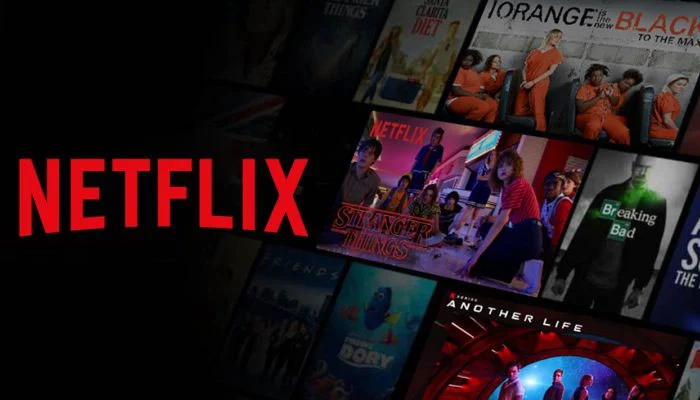How to Analyze the Impact of Movie Ratings and Censorship
Unlocking Movie Magic: Mastering Ratings & Censorship Impact ???? Dive into Film Insights Now! Discover More

Describe the Role of Movie Ratings and Censorship
Movies have always been a powerful medium of storytelling and entertainment, capable of evoking a wide range of emotions and conveying complex ideas. However, with this power comes responsibility, as the content of movies can significantly impact society. To strike a balance between artistic freedom and societal interests, the film industry has implemented movie ratings and censorship systems. This essay delves into the multifaceted role of movie ratings and censorship, exploring their history, functions, controversies, and impact on society.
Historical Context
To understand the role of movie ratings and censorship, it is essential to explore their historical origins. The concept of movie censorship can be traced back to the early 20th century when the motion picture industry was in its infancy. The first censorship board, known as the National Board of Censorship, was established in 1909 in the United States. Its primary goal was to regulate the content of films to ensure they adhered to moral and ethical standards of the time.
The early days of censorship were marked by a lack of uniformity, with different regions and countries employing their own set of rules and guidelines. This decentralized approach led to confusion and inconsistency in film content regulation. To address this, the Motion Picture Production Code, commonly known as the Hays Code, was introduced in 1930. This self-regulation code set out strict guidelines for the content of films, aiming to promote moral and family values.
?The Role of Movie Ratings
The Hays Code era came to an end in the late 1960s, making way for the modern movie rating system. The role of movie ratings is multifaceted, serving several important functions:
- Parental Guidance:?Movie ratings provide essential information to parents, helping them make informed decisions about what films are appropriate for their children. Ratings like G (General Audience), PG (Parental Guidance), PG-13 (Parents Strongly Cautioned), and R (Restricted) offer clear guidance regarding the content and age-appropriateness of movies.
- Content Disclosure:?Ratings give viewers insights into the content of a film, including its language, violence, sexual content, and drug use. This transparency allows individuals to choose movies that align with their personal preferences and sensitivities.
- Industry Self-Regulation:?The movie rating system serves as a means of industry self-regulation. Filmmakers and studios voluntarily submit their films for rating, and these ratings can influence a film's distribution and audience reach.
- Marketing and Promotion:?Ratings can be used as marketing tools. Some films proudly display their ratings, as certain ratings like PG-13 can attract a specific target audience. On the other hand, an R rating can be a badge of honor for films targeting mature audiences.
The Process of Movie Rating
Movie ratings are typically assigned by independent rating boards or organizations, such as the Motion Picture Association (MPA) in the United States. The process involves a group of trained raters who watch the film and evaluate its content based on predetermined criteria. These criteria vary from country to country and may include factors like violence, sexual content, drug use, and language.
The rating board then assigns a rating to the film, which is intended to reflect its suitability for different age groups. Common ratings include:
- G (General Audience):?Suitable for all ages.
- PG (Parental Guidance):?Some material may not be suitable for children.
- PG-13 (Parents Strongly Cautioned):?Some material may be inappropriate for children under 13.
- R (Restricted):?Restricted to viewers over 17 or 18; parents are urged to learn more about the film before taking their children to see it.
- NC-17 (Adults Only):?No one 17 and under admitted.
It's important to note that the specific criteria for each rating can vary between countries and rating organizations. Additionally, some countries may have different rating systems altogether, further complicating the international distribution of films.
The Controversies Surrounding Movie Ratings
While movie ratings serve a valuable purpose, they have not been without their fair share of controversies:
- Subjectivity:?The process of assigning ratings is subjective and can vary among different raters. What one person finds offensive, another may not, leading to inconsistencies in the ratings.
- Impact on Artistic Expression:?Filmmakers often feel that their creative vision is compromised by the pressure to conform to certain ratings. This can lead to self-censorship, where directors alter or tone down their work to secure a more favorable rating.
- Societal Change:?Movie ratings have struggled to keep up with evolving societal norms. What was considered controversial or offensive in the past may be viewed as more acceptable today, leading to questions about the relevance of older ratings.
- Censorship vs. Freedom of Expression:?The line between censorship and protecting societal values can be blurry. Some argue that movie ratings are a form of censorship, while others see them as a necessary tool to ensure that content aligns with community standards.
- International Variations:?The inconsistency in rating systems between countries can lead to confusion and challenges for filmmakers seeking to distribute their work globally.
The Impact on Society
Movie ratings and censorship play a significant role in shaping societal values, attitudes, and behaviors:
- Protecting Vulnerable Audiences:?Ratings help protect vulnerable audiences, such as children, from exposure to inappropriate content. Parents and guardians can rely on ratings to make informed decisions about what their children watch.
- Promoting Discussion:?Controversial films often spark important discussions about societal issues. Ratings provide a starting point for these discussions, allowing individuals to engage with and critique the content.
- Fostering Creativity:?While ratings can be seen as limiting artistic expression, they also challenge filmmakers to find creative ways to tell their stories within the constraints of a particular rating.
- Reflecting Cultural Shifts:?Over time, movie ratings have adapted to reflect changing societal norms. This reflects a continuous dialogue between the film industry, the public, and regulatory bodies.
- Economic Impact:?Ratings can have a significant impact on a film's box office performance. An R-rated film, for example, may have a more limited audience than a PG-13 film, affecting its financial success.
Movie ratings and censorship have come a long way from their early beginnings as a means of enforcing moral standards. Today, they serve a complex role in the film industry and society at large. While controversies and debates continue to surround their implementation and impact, they undeniably play a vital role in guiding audiences, protecting vulnerable viewers, and shaping the landscape of cinematic storytelling. The balance between artistic freedom and societal responsibility remains an ongoing challenge, but the evolution of movie ratings reflects the ever-changing dynamics between culture, creativity, and censorship in the world of cinema.
What's Your Reaction?















